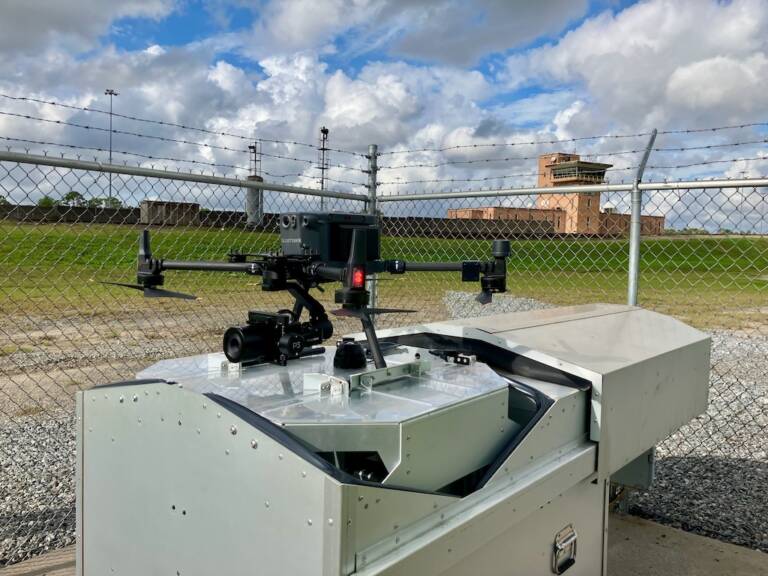Rail union asks FAA to ban drone flights over rail infrastructure
By David Lassen | October 8, 2025
SMART-TD expresses concerns over employee surveillance by rail management, as well as national security issues

Drone on launch platform
CSX uses aerial drones, like this one at Rice Yard in Waycross, Ga., to inspect yard trackage. The SMART-TD union has asked the FAA to ban drone use over rail infrastructure. Bill Stephens
WASHINGTON — A rail union has asked the Federal Aviation Administration to ban the use of unmanned aircraft systems, or drones, above rail yards and main lines. … The International Association of Sheet Metal, Air, Rail and Transportation Workers-Transportation Division, or SMART-TD, submitted comments earlier this week on a proposed FAA rule that would allow expanded drone use of beyond visual line of sight. Such a proposal was a condition of the FAA Authorization Act of 2024.
SMART-TD says it seeks the ban primarily because of what it says is an increasing use drones by railroad management for employee surveillance and operational testing, calling such use “a practice that crosses every line of safety, respect, and common sense.” Jared Cassity, SMART-TD’s national safety and legislative director, said in
a post on the union’s website, “Our rail yards are not laboratories or surveillance zones. They’re our offices. When a drone flies overhead, it’s not just a nuisance; it’s a distraction in one of the most dangerous work environments in America. And make no mistake: if something goes wrong, it won’t be the manager behind the joystick who gets hurt. It’ll be one of our members.” The union also raises national security concerns given the increasing use of drones in warfare and the hazardous materials moved by rail.
The Regulations.gov website indicates that the proposed rule, FAA Docket 2025-1908, received more than 1 million comments. … In its filing, the union cites distraction issues for train crews, risks created by inexperienced drone operators, and security risks created by drone flights. “The presence of drones over rail yards or trains creates an inability for workers to distinguish between a railroad manager monitoring performance and a bad actor conducting surveillance to identify vulnerabilities or target shipments,” the filing argues.
{snip}
